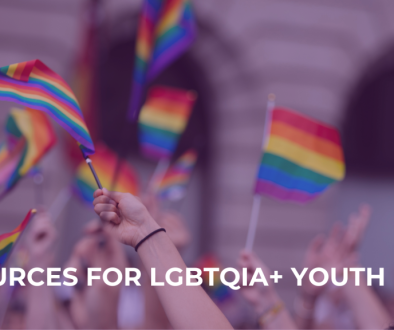Embracing Diversity: The Essential Role of Cultural Competence in Healthcare
Yasmine Deol, MD
According to the 2020 U.S. Census, the United States is becoming increasingly multicultural and diverse with population growth primarily driven by immigration. In New Jersey, the diversity index increased from 59.4% in 2010 to 65.8% in 2020. This demographic shift emphasizes the importance of cultural competence, especially in fields that work directly with children and families.
Culture is often described as an integrated pattern of human behaviors, encompassing thoughts, communication, actions, customs, beliefs, values, and institutions rooted in racial, ethnic, religious, or social contexts. It is shaped by various factors such as language, geographical location, socioeconomic status, immigration, and acculturation into Western society. Culture plays a crucial role in shaping an individual’s identity, influencing their worldview, relationships, and sense of belonging. For children, cultural beliefs are an integral part of their upbringing. Healthcare providers who work directly with children need to be culturally literate to prevent misunderstandings. For instance, a child who speaks only their native language at home may become quiet and avoid social contact upon entering school. Without cultural sensitivity, teachers and healthcare providers may misinterpret this behavior. However, a culturally responsive provider will recognize the language barrier and adjust their approach to better support the child. Similarly, newly immigrated families may hold specific religious beliefs and consult cultural healers who play a significant role in family health decisions. Understanding these cultural influences helps healthcare professionals create more inclusive and effective care plans. By embracing a multicultural perspective, individuals learn to accept, value, and celebrate similarities and differences at personal, institutional, and cultural levels.
What is Cultural Competence?
Cultural competence, or providing culturally effective care, has gained significant momentum as healthcare professionals adapt to a growing diverse population, work to address structural racism, reduce health disparities, and provide comprehensive care to communities. Cultural competence is broadly defined as a set of behaviors, attitudes, and policies that enable healthcare systems to work effectively in culturally diverse contexts.
Developing cultural competence is crucial for healthcare professionals to provide effective care in multicultural societies. It fosters better communication and builds trust and respect. However, being culturally competent involves more than just knowledge about different cultures. It begins with self-awareness—understanding one’s own beliefs, biases, and attitudes. A culturally sensitive individual not only invests time in learning about other cultures but also works through personal assumptions and stereotypes. Culturally responsive professionals tailor their approach based on the needs of individuals from different cultural backgrounds. This sensitivity is vital in forming meaningful relationships and providing care that respects the cultural distinctiveness of others. Cultural competence exists on a continuum, ranging from cultural destructiveness to cultural proficiency. At one end of the spectrum, there is a lack of awareness or rejection of cultural differences. At the other end, individuals actively seek to understand and adapt their behaviors to be culturally proficient. Moving along this continuum requires empathy, curiosity, and respect for cultural differences.
Case example:
A 10-year-old girl from a Mexican immigrant family visits the clinic with her mother for frequent stomach pains.
An instance of cultural competence: The pediatrician takes time to ask the mother about the family’s diet, cultural practices, and any traditional remedies they use for stomach issues. Her mother mentions using herbal teas that are common in their culture. The doctor acknowledges the value of their traditional practices and works with the family to integrate these with standard medical treatment, suggesting how they might combine safely. Understanding that English is not the mother’s first language, the doctor uses a medical interpreter to ensure that Maria’s mother fully understands the treatment plan and is comfortable asking questions. This approach helps the family feel heard and involved in the care process.
An instance of Lack of Cultural Competence: When a specialist assumes the family has no understanding of modern medicine, dismisses their use of herbal remedies, and provides complex instructions in English, this leads to confusion and mistrust. Feeling disrespected, the family can then become reluctant to return for follow-up care. As healthcare professionals, our commitment to cultural competence directly impacts the quality of care we provide. By actively challenging biases and embracing diversity, we can ensure that every patient receives the respect and understanding they deserve.
Cultural competence training is provided by large institutions as a part of the annual curriculum. If you are interested in reading more about cultural competence, you can also review the following references.
1. Culture and the patient-physician relationship: Achieving cultural competency in health care. The Journal of Pediatrics. 2000;136(1):14-23.
2. Vespa, Jonathan, Lauren Medina, and David M. Armstrong, Demographic Turning Points for the United States: Population Projections for 2020 to 2060.; 2018:P25-1144. census.gov
3. Practice Parameter for Cultural Competence in Child and Adolescent Psychiatric Practice. Journal of the American Academy of Child & Adolescent Psychiatry. 2013;52(10):1101-1115.
4. Providing Culturally Effective Care. In: McInerny TK, Adam HM, Campbell DE, et al., eds. American Academy of Pediatrics Textbook of Pediatric Care. American Academy of Pediatrics; 2016:0.
Author Profile:


Yasmine Deol, MD
Child & Adolescent and Adult Psychiatrist
Secretary, New Jersey Council of Child and Adolescent Psychiatry




